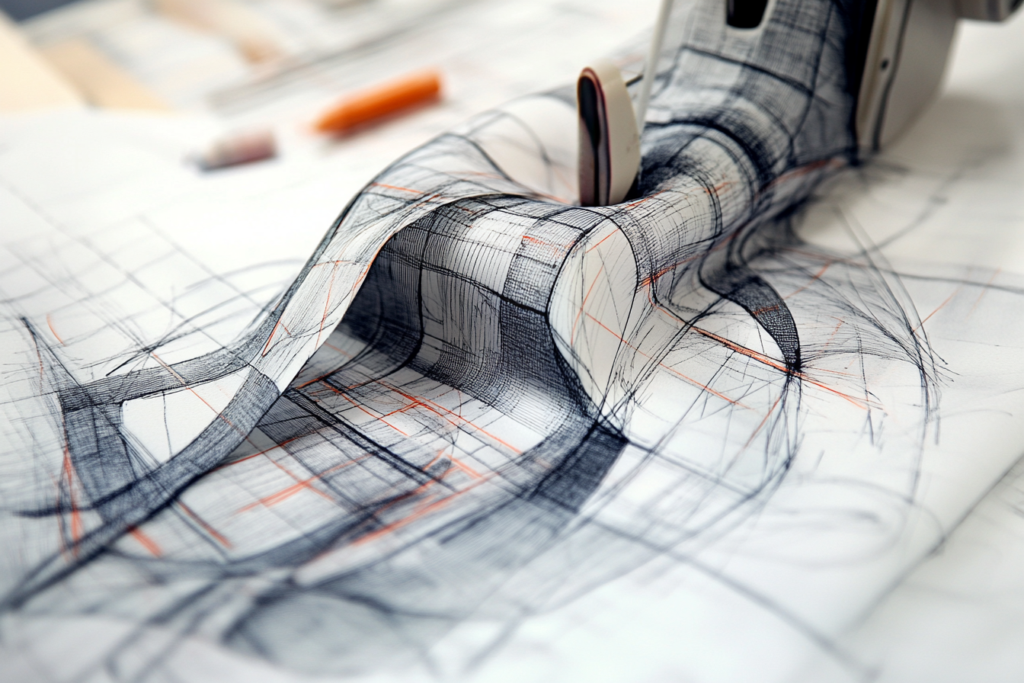Plain Seam: The Basic & Most Common Sewing Method
Meta Description: A plain seam is the most common sewing method, where two fabric pieces are joined with right sides facing. Learn how it’s used in garment construction and different seam finishes.
What is a Plain Seam?
A plain seam is the most fundamental sewing method used to join two fabric pieces together. This technique involves placing the right sides of the fabric facing each other and stitching along the seam line. Once sewn, the seam allowance can be pressed open or finished to prevent fraying.
Plain seams are widely used in apparel, home textiles, and industrial sewing due to their simplicity, versatility, and clean appearance.
Key Features of a Plain Seam
✔ Right Sides Facing Each Other – Ensures a neat, hidden seam on the inside of the garment.
✔ Common in All Types of Garments – Used in shirts, dresses, trousers, skirts, and home décor.
✔ Can Be Pressed Open or Finished – To reduce bulk and prevent fraying.
✔ Easy to Sew & Versatile – Works on woven and knit fabrics.
✔ Used as a Base for Other Seam Finishes – Can be reinforced, topstitched, or enclosed.
Where is a Plain Seam Used?
📌 Garment Construction – Found in everyday clothing, from casual wear to formal suits.
📌 Home Textiles – Used in curtains, pillowcases, and bedding.
📌 Industrial & Mass Production Sewing – The standard method for efficient, durable seams.
📌 Lining & Delicate Fabrics – Works well with lightweight, smooth fabrics.
📌 Outerwear & Tailoring – Serves as the foundation for reinforced seams.
Types of Plain Seam Finishes
1. Open Seam (Pressed Open)
- The seam allowances are pressed apart to lay flat.
- Common in structured garments, blouses, and lightweight fabrics.
2. Overlocked Plain Seam
- The seam allowance is finished with an overlocker (serger).
- Ideal for preventing fraying in woven fabrics.
3. French Seam (Enclosed Plain Seam)
- The raw edges are completely enclosed for a clean finish.
- Best for delicate fabrics like silk and chiffon.
4. Topstitched Plain Seam
- A visible row of stitching along one or both sides of the seam.
- Adds durability and decorative detail in jeans, jackets, and casual wear.
5. Flat-Felled Seam (Strengthened Plain Seam)
- The raw edges are folded and stitched down for extra durability.
- Common in denim, sportswear, and workwear.
💡 Tip: Use overlocked or French seams for delicate fabrics and flat-felled seams for heavy-duty garments.
Plain Seam vs. Other Seam Types
| Feature | Plain Seam | Flat-Felled Seam | French Seam | Overlocked Seam |
|---|---|---|---|---|
| Appearance | Simple, pressed open | Strengthened, topstitched | Enclosed, no raw edges | Finished with an overlock |
| Durability | Moderate | Very strong | Moderate | Prevents fraying |
| Best For | General garment construction | Denim, workwear | Delicate fabrics | Woven fabrics, mass production |
💡 Tip: Plain seams are versatile but should be finished properly for durability and aesthetics.
How to Sew a Plain Seam
1️⃣ Align the Fabric – Place the right sides of the fabric together.
2️⃣ Pin or Clip the Seam – Ensure the edges are even and secure.
3️⃣ Sew Along the Seam Line – Use a straight stitch with a standard seam allowance (usually ⅜” or ½”).
4️⃣ Press the Seam – Either press it open or to one side, depending on the finishing method.
5️⃣ Finish the Edges (If Needed) – Use overlocking, pinking shears, or bias binding for a clean finish.
💡 Tip: For extra strength, backstitch at the beginning and end of the seam.
Why Choose a Plain Seam?
✔ Simple & Quick to Sew – The easiest seam construction method.
✔ Works on All Fabrics – Suitable for lightweight, medium, and heavy fabrics.
✔ Allows for Multiple Finishing Options – Can be reinforced or enclosed.
✔ Essential in Every Garment – A standard method in fashion design.
✔ Provides a Clean, Professional Look – Works well for both casual and formal wear.
Conclusion: The Versatility & Importance of the Plain Seam
A plain seam is the foundation of garment construction, offering simplicity, strength, and flexibility in sewing. Whether used in casual clothing, formalwear, or industrial sewing, this technique remains essential in all aspects of fashion and textile production.
For designers, tailors, and sewing enthusiasts, mastering the plain seam is the first step toward creating professional-quality garments.



